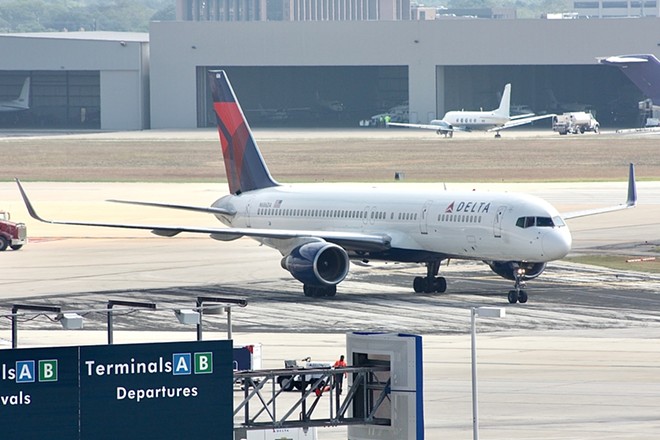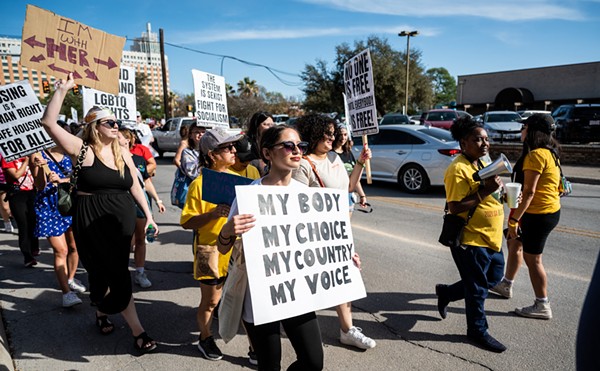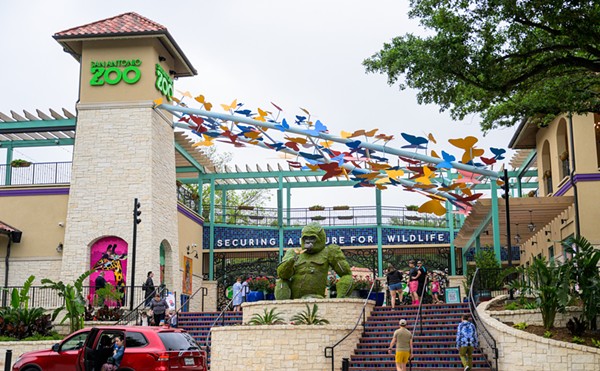
Editor's Note: Cityscrapes is a column of opinion and analysis.
In a recent news release about San Antonio International Airport's 2023 passenger numbers, local officials gushed with enthusiasm. The year marked "SAT's busiest year ever in its 80-year history," during which it served 10,676,570 passengers — or 3% more than the previous record set in pre-pandemic 2019.
"We are on cloud nine," said Jesus Saenz, director of airports for the San Antonio Airport System (SAAS). "This is a historical milestone for SAT with 10.7 million passengers." The airport also had its busiest December ever, topping 900,000 passengers. The airport's statement promised there would be more to come in 2024, thanks to the start of new service by Spirit Airlines to Newark and Tampa and our first direct service to Europe by Condor Airlines starting in mid-May.
The impressive news was duly reported by the local media, with the Express-News headline shouting that the airport "beats pre-pandemic passenger reecord," KSAT offering "We are on Cloud Nine," the San Antonio Report lauding "Airport lands major milestone" and WOAI reporting "Airport hits record."
It all sounded absolutely great. Except that it desperately lacked context.
Airline passenger demand boomed last year since lots of folks returned to travel after the lockdown and disruptions of the COVID-19 pandemic came to a close. And San Antonio was far from the only airport to see a notable increase in passenger volume.
We'll get the fullest picture when the Federal Aviation Administration publishes stats for all U.S. airports later this year. But a preliminary look at other major airports can provide a little context for understanding the 3% increase recorded in San Antonio. In Dallas, the passenger count at Love Field was up 4.8% from 2019. At Phoenix Sky Harbor, it was up 5.6% over the same period. Tampa's airport served 6.45% more passengers than before COVID.
And then there's Austin-Bergstrom International. Austin too set a record in 2023, logging a total of 21.1 million passengers — a whopping 20% increase from 2019.
The growth at SAT looks remarkably modest in that context.
A closer look at the 2023 numbers by airline also reveals an interesting picture. Southwest remains far and away the dominant carrier for San Antonio with a 38% share of passengers last year. But its total was actually down 1% from 2019. Among the major carriers, American was flat, while United and Alaska were down. Only Delta experienced growth in San Antonio passengers from 2019.
The real increase came from the ultra-low-cost carriers. You know, the ones where you pay extra for everything beyond a basic seat. Frontier managed a 65% increase in San Antonio passengers, and Spirit Airlines boomed, capturing 5.1% of the domestic passenger market here in 2023.
The airline shares illustrate a larger competitive reality in San Antonio. Despite the longtime pressure from the city's business leadership for more nonstop flights, despite the generous subsidies the airport and local organizations have doled out to lure and support new air service, we remain a relatively poor city.
Low cost carriers with $39 fares can do well in serving our leisure market. A Spirit — and perhaps Condor as well — can manage here with the aid of subsidies and revenue guarantees. But we lack the kind of economy and firms that generate a large, consistent volume of business travel — the kind of travel that's most profitable for the major air carriers.
And that's not likely to change until our economy truly develops.
San Antonio desperately needs better, higher-paying jobs in something other than hotels and hospitality. We need corporate headquarters that choose to come here and actually stay and grow.
Then-Mayor Henry Cisneros promised those things in the mid-1980s and for the most part failed to deliver on them.
Hindered by a lack of vision and a failure to address the root causes of the generational poverty that's long plagued San Antonio, civic and business leaders have continued to make similar promises over the following decades, and again, they have fallen short.
Until that changes, apparently we'll have to make do with gushing press releases.
Heywood Sanders is a professor of public policy at the University of Texas at San Antonio.
Subscribe to SA Current newsletters.
Follow us: Apple News | Google News | NewsBreak | Reddit | Instagram | Facebook | Twitter| Or sign up for our RSS Feed


















